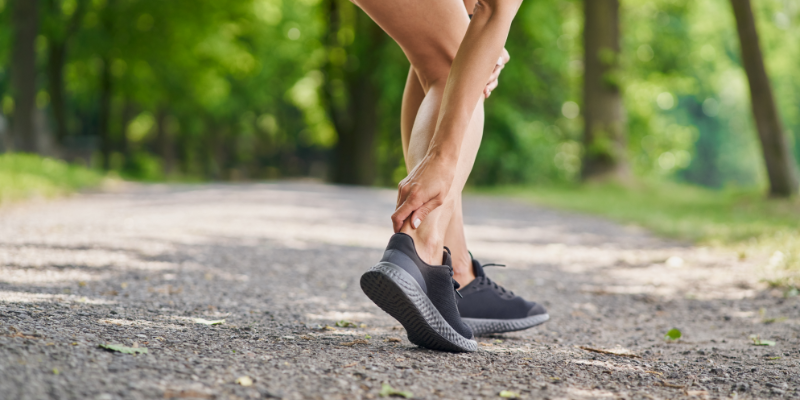Why is the back of my ankle sore?

Have you ever experienced pain in the back of your ankle? It could be Achilles tendinopathy, a common issue that affects the tendon connecting your calf muscles to your heel bone. But did you know that sometimes what seems like Achilles tendinopathy might be something else? Let’s dive into how physiotherapists assess and differentiate this condition to ensure the right treatment.
Types of Achilles Tendinopathy
First off, there are two main types: mid-portion and insertional. As the names suggest one is right in the middle of the tendon and the other where the tendon attaches to the heel bone. Understanding these starts with knowing how tendons handle different loads:
- Tensile Load: Quick, powerful movements like jumping often lead to mid-portion Achilles tendinopathy.
- Compression Load: This occurs when the tendon is pressed against bone, often at the heel. It’s typical with insertional Achilles tendinopathy.
- Combination: Sometimes, both types of loads happen together, like when pushing off from a bent ankle position.
- Shearing Friction: This is more about repetitive, mid-range activities like cycling or swimming, often associated with paratendinopathy, a different condition.
Subjective Assessment
When you talk with a physio about your ankle pain, they’ll ask where it hurts, how it feels with different movements, and if it gets better or worse over time. For Achilles tendinopathy, pain around the middle or the heel of the Achilles tendon, especially with jumping or dorsiflexion (bending your ankle up), is a telltale sign.
Objective Assessment
Then comes the hands-on part of the exam. They’ll watch you move and test your strength to see how your ankle reacts. For example:
- Observation: They’ll check for any obvious signs like scars, muscle changes, swelling or thickening.
- Load Testing: This involves doing various activities, like calf raises or hopping, to see if they trigger pain.
- Calf Capacity: This assesses the endurance and strength of your calf muscles.
Differentiating from Other Causes
Sometimes, what seems like Achilles tendinopathy might actually be something else, like:
- Achilles Paratendinopathy: This involves irritation of the sheath-like tissue around the Achilles tendon, often from activities like cycling.
- Plantaris Paratendinopathy: Similar to Achilles paratendinopathy, but involves a different tendon.
- Sural Nerve Irritation: This is rare but can cause pain on the outer side of the Achilles tendon.
- Posterior Ankle Impingement: Pain deep in the ankle, especially with pointing your foot, is common in sports like soccer or dancing.
- Flexor Hallucis Longus (FHL) Paratendinopathy: This involves irritation of another tendon in the foot.
Wrapping Up
So, if you’re dealing with posterior ankle pain, it’s essential to get a thorough assessment to ensure you’re on the right track for treatment. By understanding the type of Achilles tendinopathy or ruling out other causes, your physio can tailor a plan that gets you back on your feet in no time.
Remember, your feet are the foundation of your movement, so taking care of them is crucial for staying active and pain-free.
Michal Pierce
Sports Physiotherapist – Lake Health Group
